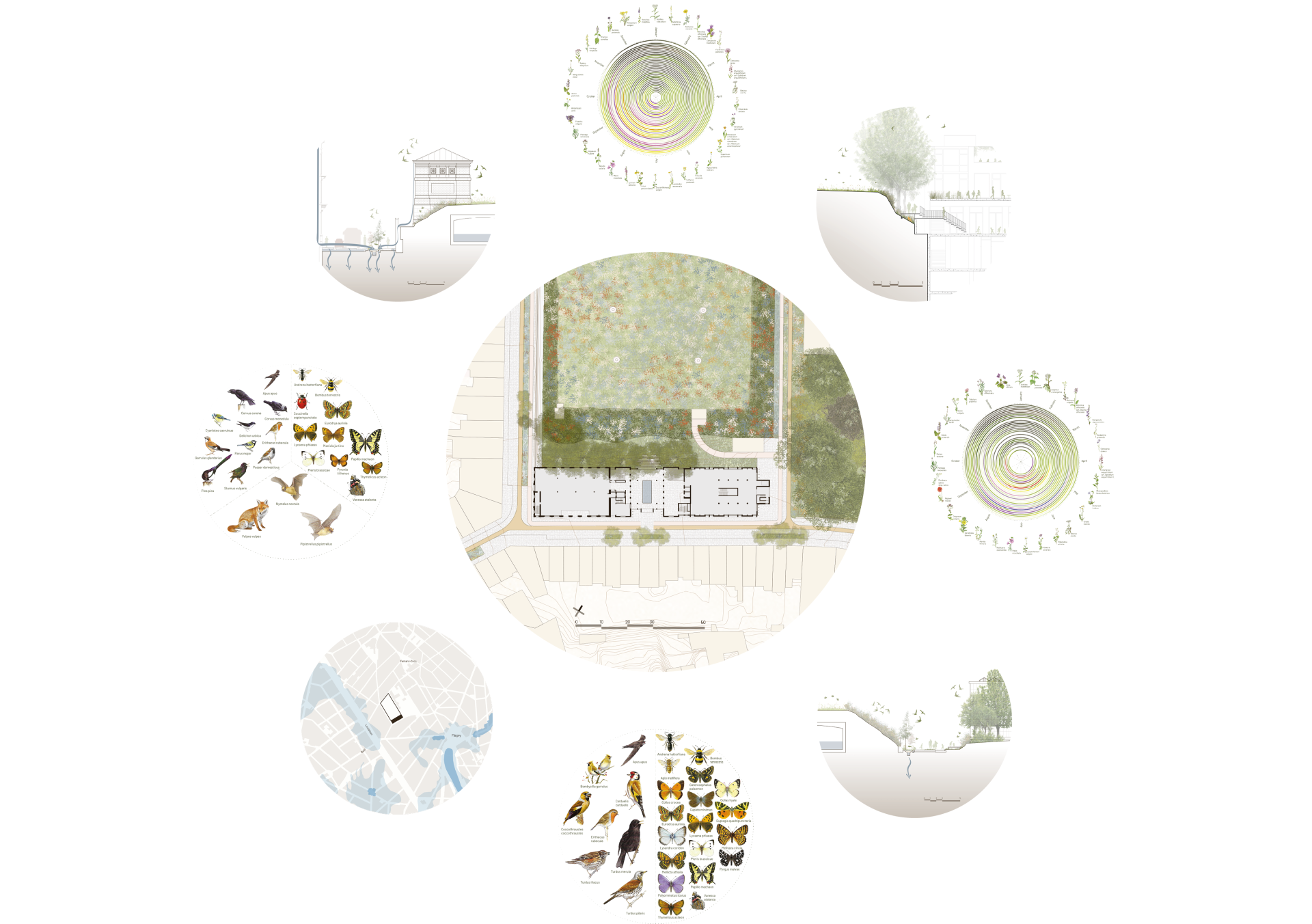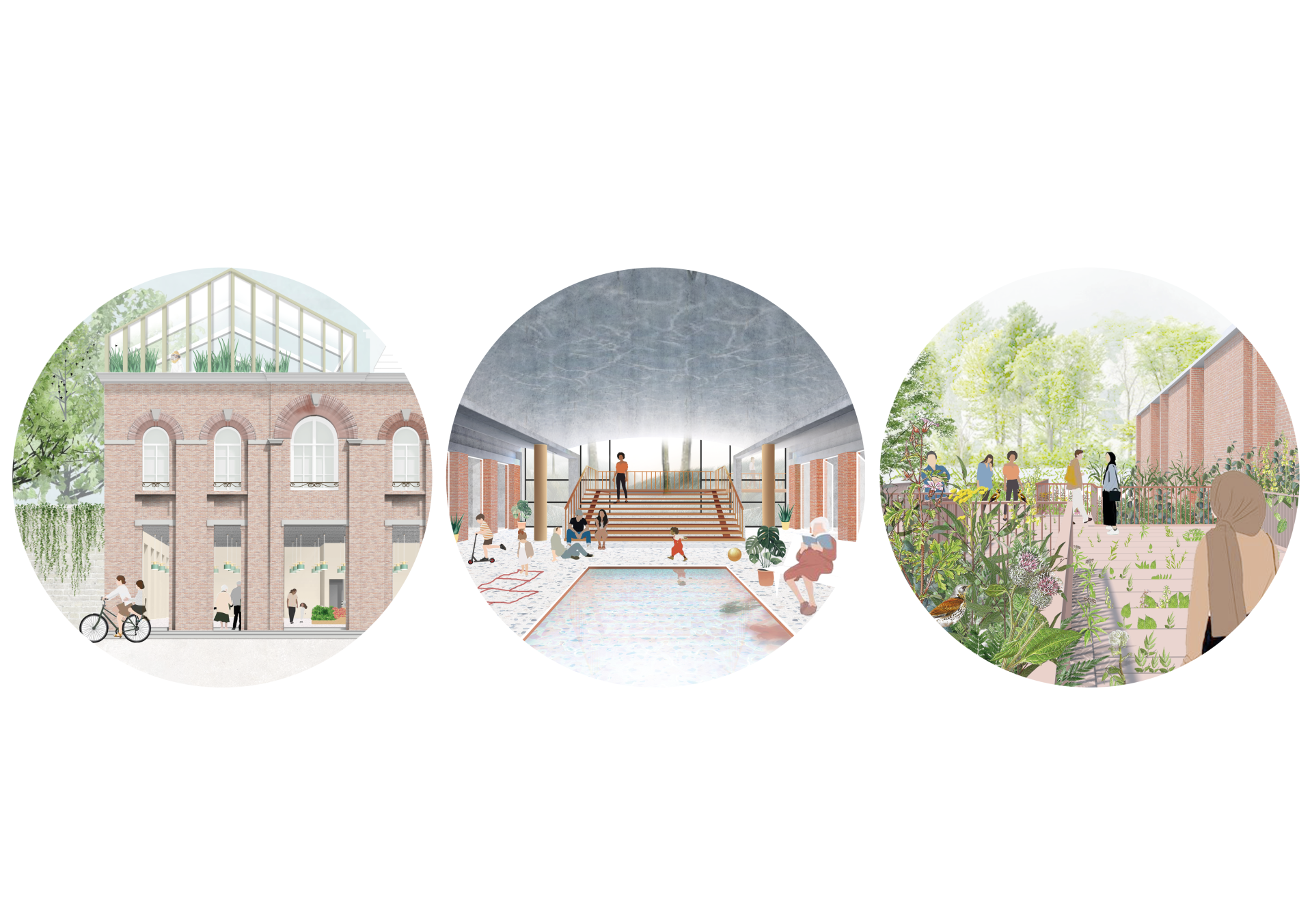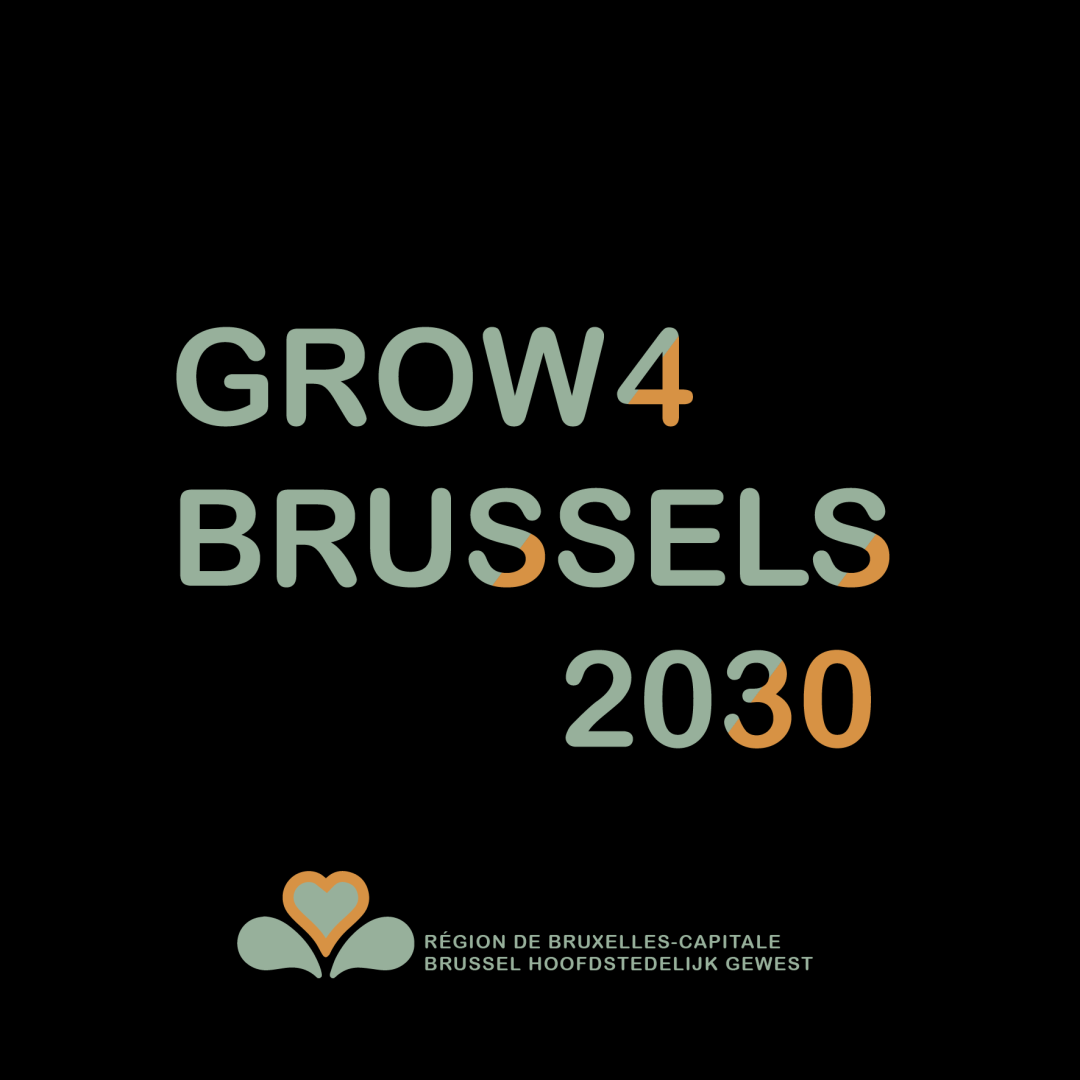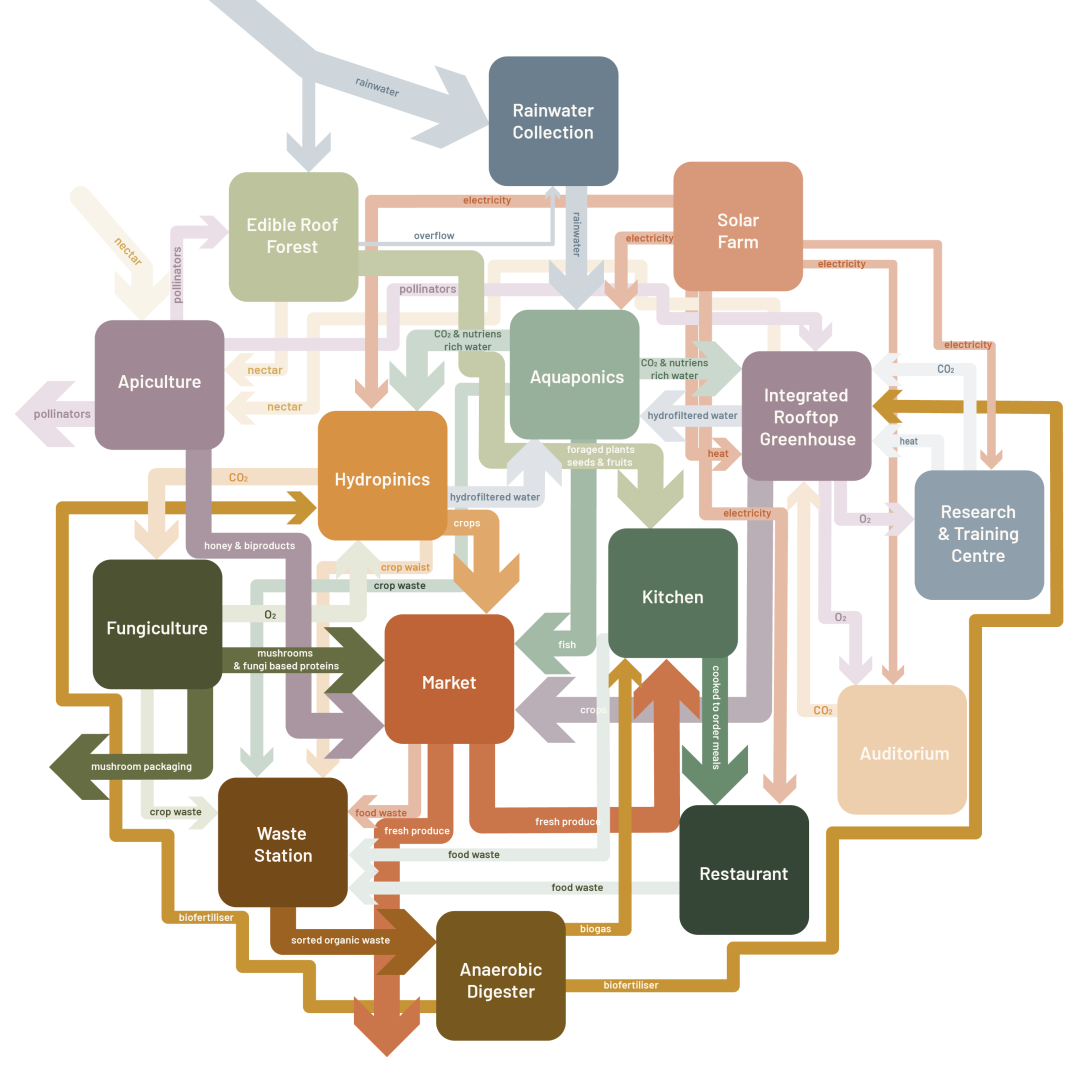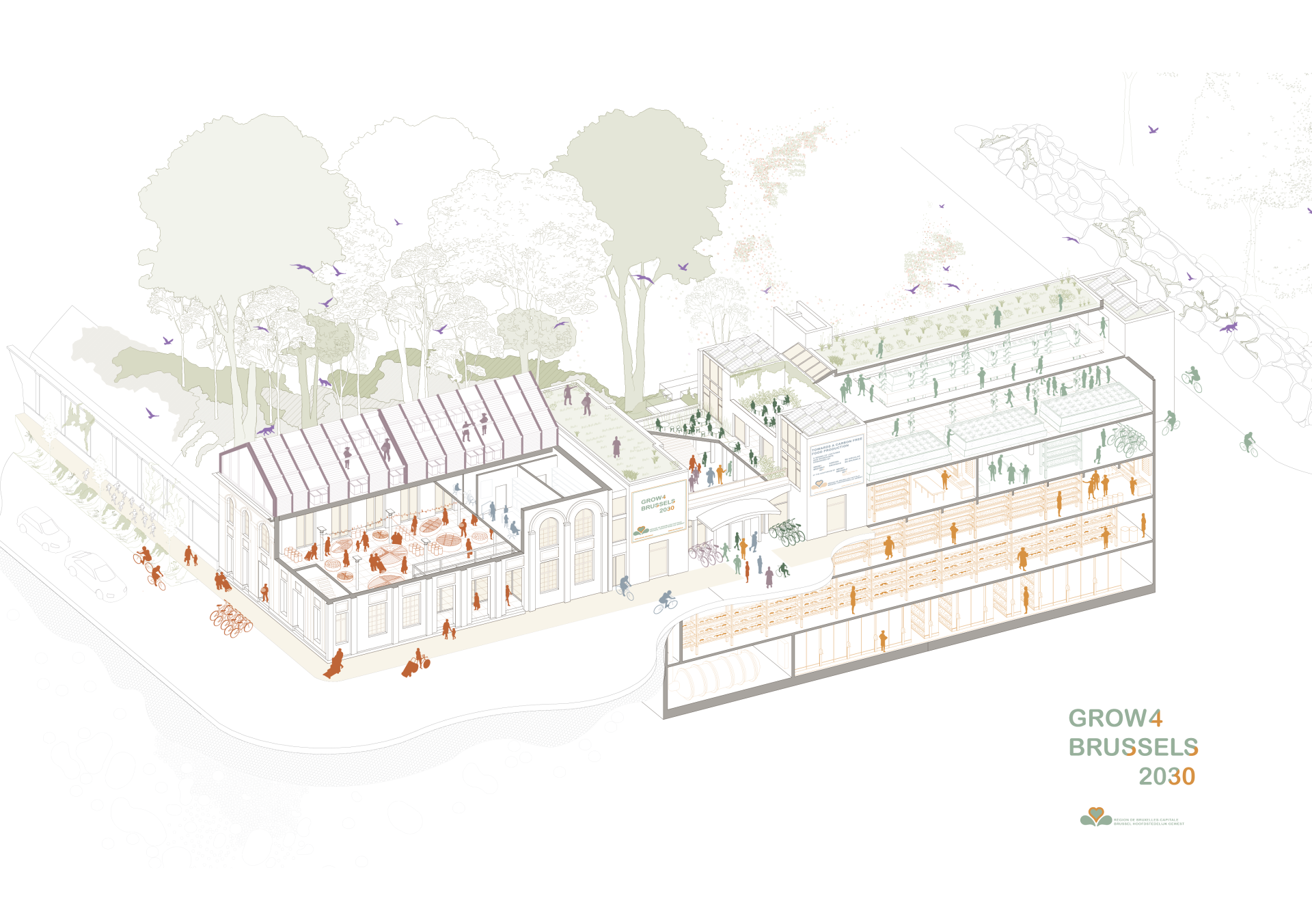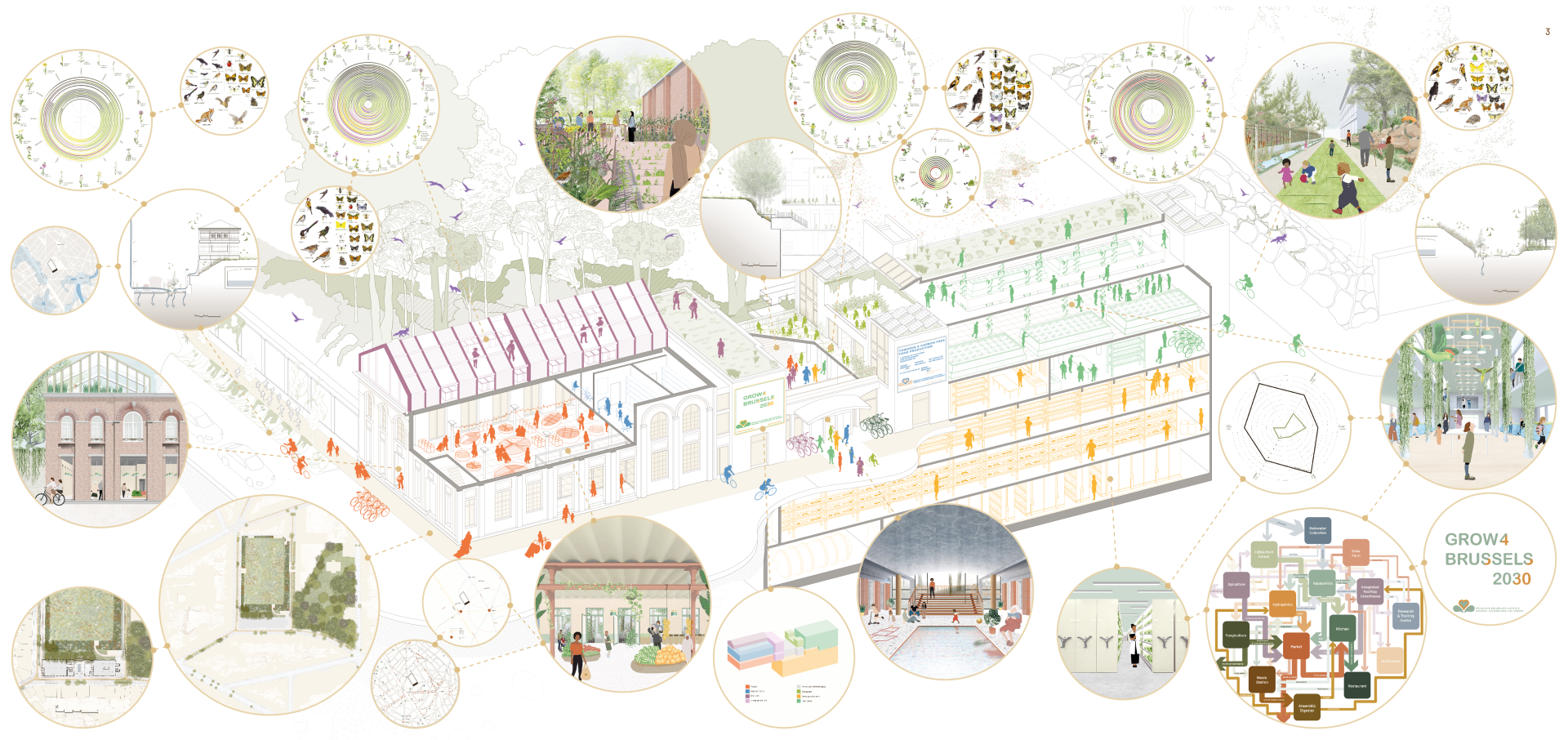Grow 4 Brussels 2030
Basic information
Project Title
Category
Project Description
Do you want to buy your food directly from the source? Do you want to become a farmer but you do not want to move away from the city? Do you dream of opening your bedroom window and seeing a wild meadow but all you get is parked cars? Then "Grow 4 Brussels 2030" has the solution for you! A fully fledged farm in the middle of the bustling city of Brussels with a market, a restaurant and a visitor centre for all to enjoy. Let's redefine our food together! Let's grow together!
Geographical Scope
Project Region
Urban or rural issues
Physical or other transformations
EU Programme or fund
Which funds
Description of the project
Summary
How can a historical building help pave the way towards a climate and economic transition aligned with the regional objectives related to direct and indirect greenhouse gas emissions by 2030? How can an initiative of this scale function as a catalyst for rethinking spatial planning and the relations between production, public facilities, economic activity, leisure and green spaces? 'Grow 4 Brussels 2030' initiative aims to not only help the Brussels Capital Region to strengthen its commitments as included in the NECP (National Energy and Climate Plan) and raise the objectives of the European union, but also spearhead the transition towards a circular and regenerative economy with focus on social and democratic entrepreneurship and the respect of the urban ecosystems. For those targets to become reality, a seemingly complex yet quite simple holistic approach was drawn ,transforming the former museum complex of CIVA to an integrated centre of food production, agricultural entrepreneurship, research, training, education and preservation. The once conceived as an enclosed and egocentric space, that will be left empty after CIVA moves to its new location, gets the needful porosity to create the ideal conditions both for nature and the local population to come and reactivate the building with a multitude of different activities.
At the same time with the building, the surrounding streets are also receiving a makeover giving priority to soft mobility. Street level parking gives its place to planted bioswale, creating a wetland ecosystem and allowing rainwater to infiltrate in plain sight. This change, as well as protecting the area of the Maelbeek valley, historically prone to flooding, from the extreme weather patterns caused by climate change, will also function as an invitation to passers-by to reach the site and explore it aiding the transformational process of the complex from being the building of CIVA to becoming the hub of 'Grow 4 Brussels 2030'.
Key objectives for sustainability
With EU's level of urbanism set to increase to 83.7% by 2050 the challenge of providing food to everyone in a sustainable and efficient way is of paramount importance. For millennia humans have farmed the land for food but with the sharp rise of the population, as a result of the industrial revolution, the pressure on traditional agriculture has exponentially increased. More than 49% of EU's land is used for agriculture. That results to (in) environmental challenges ranging from habitat clearance to biodiversity loss and soil erosion that in turn put extra pressure on agriculture. Added (to) these challenges are a changing climate with the disruption of the seasonal weather patterns and the lack of suitable soil in the vicinity of the expanding urban centres. The solution we see to that problem is the creation of highly densified urban agriculture centres, inside the existing urban infrastructure, that will condense the sprawling agricultural land to much smaller factory-like sites with optimised conditions and increased yields. By optimising the space and diversifying the produce, those centres can be located in a vastly smaller site in the city centres resulting not only in the creation of more space for nature and local ecosystems to take over but it also eliminates the CO2 emissions generated during the transport of food. The controlled environment created in these centres lifts all environmental pressures and thus eliminates the need for pesticides and fertilisers. At the same time the creation of closed water cycles supplied by rain water harvesting systems not only eliminates any water consumption but it also protects our urban areas from the extreme rainfalls caused by climate change. Finally the reuse of agricultural waste as a source of biogas and the combination of edible green roofs with solar panels creates a closed circular system able to function completely self-sufficiently at all times.
Key objectives for aesthetics and quality
For centuries europeans have tried to keep nature at bay and at large out of their cities and when they allowed her to come within the boundaries of their urban environment she had to be contained and highly manicured even if in some instances the wished result of that intensive design process was something resembling a naturalistic landscape (english gardens). As a result our cities have become like little islets on the landscape with barely any connection with their locus. Moreover their inhabitants have become disconnected from their natural environment and they regard it as a mere background for their weekend escapes. But in the past couple of years that seems to be changing. If the COVID pandemic has shown us something, it is that the attitude of the European urban populations towards nature has started to change with more and more seeking to reconnect with nature and start appreciating the benefits that she has to offer. The solution we see fitting to that desire of the European is the creation of a layer of natural common spaces that superimposes itself on top of the existing urban infrastructure. Thus, the precious vacant spaces of our cities are transformed to green rooms, little secrete gardens, ready to accommodate not only the daily quest of the urban populations for escape from the hustle and bustle of the city life and reconnect with what is important but also the diverse fauna of the city that has started to reclaim its rightful place on the city image as a result of the consecutive lockdowns of the past years. By opting for a nature based design process, focused on the creation of natural processes and not fixed end results crystallised in time, and the utilisation of a palette of strictly native flora we augment the sense of belonging of the city to its natural surroundings and we guarantee its environmental longevity. The result is a welcoming city with a life centred perspective that brings its citizens and their communities closer to nature.
Key objectives for inclusion
Since the 80's the Europeans experienced an unprecedented decay of the traditional structural and attitudinal mechanisms of solidarity, cooperation and exchange between them. The problems of that gradual decay were augmented by the financial crisis of 2008 which rendered visible the structural faults of the mechanisms of exchange of goods between individuals with regard to work, education, economic interactions and the like. Although we cannot undo what has been done in the past, we can try to improve the existing situation. Our vision for the restoration of the long lost, and very much needed, social cohesion in the modern European urban centres is the creation of an urban agricultural entrepreneurial initiative which main objective is shifted, from making profit for their stakeholders, towards having a social impact by focusing on proximity economy while creating equal opportunities, engaging the local population, enhancing public participation and stimulating co-design processes. The initiative operates in an entrepreneurial and innovative way for providing sustainably sourced and nature-based goods to the market and redirect the profits towards achieving, primarily, its social objectives while following democratic and participatory principles. Our project aims to establish strong and multifaceted connections with the neighbourhood by addressing its particular needs. On one side we are working together with people who have fewer opportunities in the labour market and which will be gradually pushed closer to it by gaining skills, experience and social networks through their participation in the actions and work of the initiative. Parallel to that a variety of programs aimed for different groups of people will not only offer an enhanced overall experience but they will also offer space for community-building and positive intergenerational exchanges.
Physical or other transformations
Innovative character
When called to deal with the renovation and reprogramming of a building with not only historical value but also dominated by a very specific architectural vocabulary formulated to host one and only one use, one might feel timid. When on top of that there are added budget restrictions, regulations to be followed in regard with high security areas and a very diverse neighbourhood, the pressure becomes even greater. In order to help us with our design process we created for the very beginning a list with our core values that must become an integral part of the new design. This list was focused on the terms of circularity, environmental sustainability, social inclusion, affordability and high-quality user experience. The re-programming of the vast subterranean surface of the building, that stretched over 3 levels and was packed with build in storage equipment, was inspired by the local tradition of using the basements of the city houses for the production of the Belgian endive, was the springboard for the reprogramming of the entirety of the complex and its surrounding space and the creation of "Grow 4 Brussels". The urban farming and urban fish farming which have found their roots in the area since the Middle Ages are now coming to breathe new air to the neighbourhood. Oriented around the production of, sustainably grown and high nutritional quality produce a multitude of other programs come to nestle in the existing built environment. An agricultural research and innovation centre creates links with the, somewhat, financially struggling students at the neighbouring schools and a restaurant and visitors centre creates connections with the local community and the urban population while playing an educational purpose. Finally green spaces, championing the native flora, are created, engulfing and restoring a multitude of ecosystems, from meadows to forests and boggy areas. That synergy between all different elements is the one creating an outstanding condition in the city

